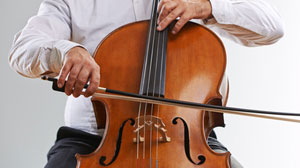“Practice makes perfect,” the saying goes. Optimal performance, however, can require more than talent, effort, and repetition. Training the brain to reduce stress through neurofeedback can remove barriers and enhance one’s innate abilities.
An article in the journal Biofeedback presents the narrative of a young cellist who was able to realize the potential of his talent and eliminate debilitating migraine headaches. This case study is part of a special section in the Spring 2012 issue focusing on optimal functioning.
Enhancing people’s performance in business, performing and visual arts, academia, and sports can be realized through biofeedback and neurofeedback training. Tools of stress reduction, mental imagery training, psychology, and psycho-physiological technology are combined to help people reach their goals.
The author and practitioner in this case study has combined her work and study in the fields of theater, social work, and neurofeedback. In her practice, she coaches clients to achieve outstanding performances. For example, a singer can better understand and interpret a musical selection, allowing that singer to better convey the emotion of the music, resulting in a noticeably improved performance.
William, the young musician, sought relief from migraine headaches that were affecting him almost daily. His therapy, however, did not take the approach of treating the headaches, but of focusing on William as a person and as a performer. By improving his functionality, working through moments of obsessiveness, self-criticism, fear, and anxiety, the headaches could also be resolved.
William’s therapist conducted neurofeedback — using sensors to read his brainwaves, analyzing these with NeuroOptimal™ software, and then giving feedback to the brain through a visual display and sound. With this information, the brain can learn to self-correct. This technology assists in getting people past that moment when they obsess over whether they have given the correct answer or hit the right note.
NeuroOptimal feedback, guided imagery, and coaching about decisions regarding his music helped William move beyond the difficulties he encountered. During his senior recital at his college, he was able to give a relaxed, confident performance that was met with a standing ovation.
Full text of the article, “William’s Story: A Case Study in Optimal Performance,”
Biofeedback, Volume 40, Issue 1, Spring 2012


